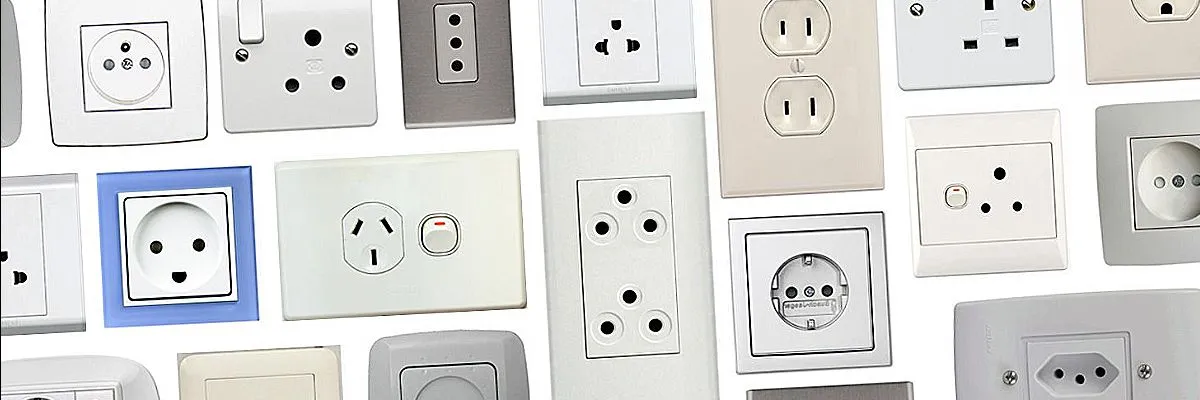In an increasingly globalized and interconnected world, electrical outlets are essential to enjoy most of the conveniences of modern life. However, it is curious that this connection is not as universal as we might think. The different types of plugs used around the world have come in a surprising variety of shapes and standards. From the Type A plug to the Type N plug, each of these designs serves an identical function, but with its own style.
EU and US Plug: What’s the Difference?
Two of the most popular types of plugs are the EU (European) and US (United States). The EU plug is recognizable by its two round pins and is used in most European countries. On the other hand, the US plug features two flat or “V” shaped pins and is the standard in the United States and other North American nations.
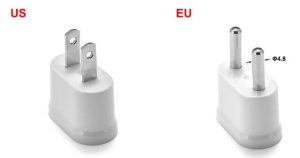
How many types of plugs are there in the world?
Globally, there are a staggering variety of plug types, each with its own unique shape and technical specifications. To better understand the diversity of existing plugs, nothing better than to take a look at some of the most common types and their places of origin:
Plug type A
Characterized by two parallel flat plugs with small holes in each, the A-type plug is a standard in numerous countries, from the United States to Vietnam. Its versatility has made it a very common connector in much of the world.
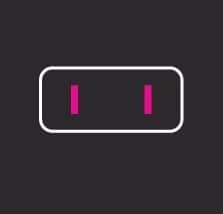
Plug type B
The type B plug is similar to the type A plug, but with an additional round pin for grounding. This plug is common in North America and is also used in places such as Japan, the Philippines and Taiwan.
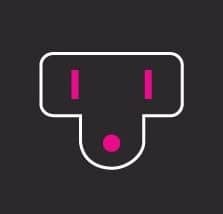
Plug type C
Continental Europe has adopted the type C plug, which features two parallel round plugs. However, it is important to note that the United Kingdom, Ireland and Malta follow a different path with their own standard. Given its simple design this plug is compatible with other standards such as the E, F, and K plugs with two holes and even the J, K or N plugs with three holes in the female.

Plug type D
In places like India and Nepal, the D-type plug with three round triangle-shaped pins is the standard. This unique shape ensures a safe and reliable connection in these regions.

Plug type E
The E-type plug, with two parallel round pins and a hole above them, is a popular choice in France, Belgium, Poland and other European countries.

Plug type F
Similar to Type E but including two grounding lugs, the Type F plug, known as Schuko, is widely used in Germany, Austria, Spain and many other European countries.

Plug type G
This model features three rectangular plugs arranged in a triangle, the G-type plug is the standard in the United Kingdom, Ireland, Cyprus and other nations, generally historically linked to the United Kingdom. It is also used in places such as Malaysia and Saudi Arabia.

Plug type H
The H-type plug is distinguished by two flat V-shaped pins with a third ground pin on top of them. This unique design is found in Israel.

Plug type I
The type I plug, with two flat V-shaped pins and a grounding plug, is the standard in Australia, New Zealand or Argentina, among others.
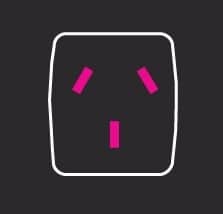
Plug type J
In places such as Switzerland or Liechtenstein, the J-type plug is used, which has two round pins and a grounding plug.

Plug type K
In countries such as Denmark they use the K-type plug, with two round pins and a grounding plug underneath them.

Plug type L
The L-type plug, with two round pins and a grounding plug in the middle, is common in Italy, Chile and Uruguay.
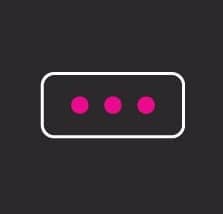
Plug type M
The M-type plug, with three long round pins in a triangle, is used in South Africa, India and elsewhere.

Plug type N
Finally we have the N-type plug, with two separate round plugs and a grounding plug in the center, common in Brazil and South Africa.

Why isn’t there a single plug for all countries?
Undoubtedly, the absence of a single plug type for all countries is due to a combination of historical, technical, economic and cultural factors that have favored the parallel development of different standards. Some of the main reasons that have favored this variety of plug types are:
- History and independent development: Electrical and, consequently, plug systems developed independently in different countries. Before globalization, favoring the use of worldwide standards was not a priority and each country adopted its own standards based on its electrical infrastructure and technical preferences.
- Voltage and frequency differences: Electrical systems vary in voltage and frequency around the world. Some countries use 110-120V, while others use 220-240V. This directly affects plug and socket designs, as they must be optimized for local electrical capacity and safety needs.
- Safety considerations: Electrical safety standards also differ from region to region. Socket systems must be designed to ensure the safety of users and prevent risks such as short circuits and electric shock, but they must also comply with regulations. The different existing safety regulations lead to different plug designs.
- Cost and infrastructure changes: Changing current plug systems internationally to adopt a single system is extremely costly. It would require not only a substantial modification of existing electrical infrastructures and electronic devices, but also a legislative change to unify the different regulations.
In summary, although the idea of a single plug for all countries may seem practical, the reality is that the diversity of electrical systems, safety standards, costs and cultural factors have led to the existence of multiple types of plugs around the world. A situation that is very difficult to reverse.

